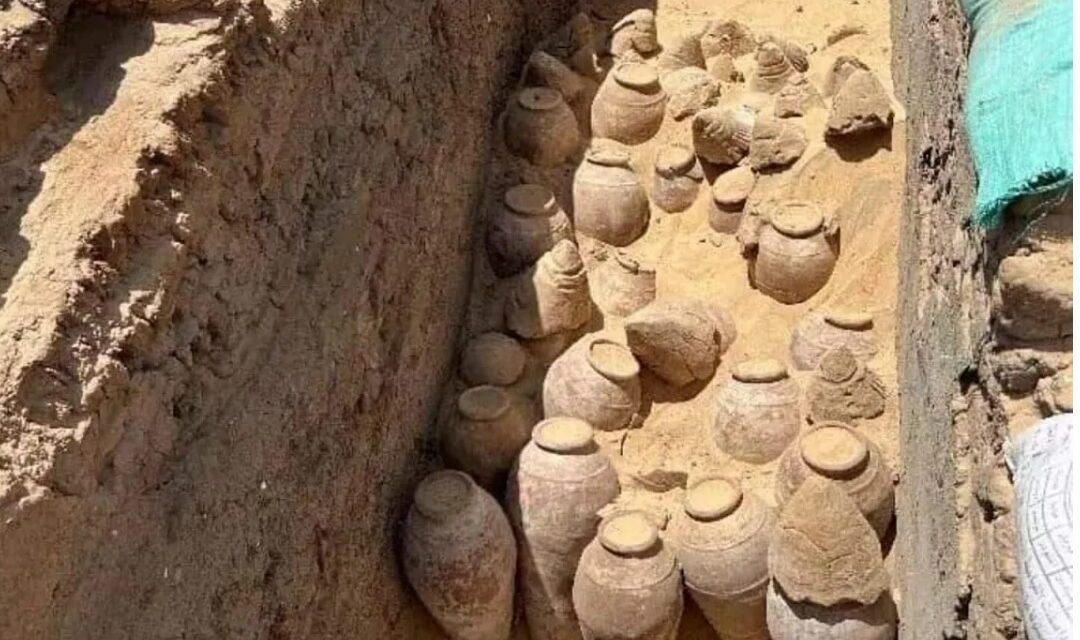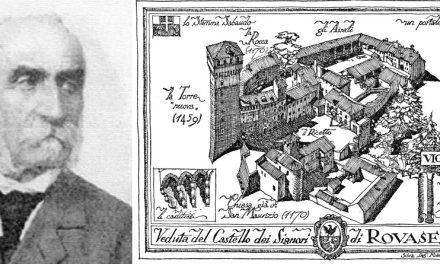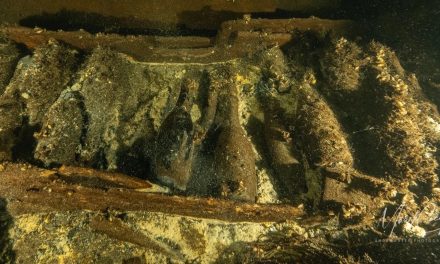New Discoveries in the Tomb of Queen Merit-Neith Challenge Long-Held Beliefs
CAIRO – In the desert expanse of Umm El Qa’ab at Abydos, Sohag, a joint Egyptian-German-Austrian archaeological mission made an astonishing discovery: hundreds of sealed jars, believed to be 5000 years old, containing remnants of wine. These were found during the excavation of the tomb of Queen Merit-Neith of the 1st Dynasty, alongside a rich assortment of funerary equipment.
Mostafa Waziri, Secretary General of the Supreme Council of Antiquities, enthusiastically described the discovery of numerous grave goods, especially highlighting the large wine jars. Some of these jars even had intact stoppers and well-preserved ancient wine remnants. Inscriptions within the tomb suggest that Merit-Neith not only held significant governmental roles, such as overseeing the treasury, but may have also played pivotal roles in historical events.
Dietrich Raue, from the German Archaeological Institute, posits Merit-Neith as the lone woman of her time with a monumental tomb in Egypt’s premier royal cemetery at Abydos. Raue’s observations indicate that she might well have been the era’s most influential woman. Recent findings have led archaeologists to theorize that Merit-Neith could potentially predate Queen Hatshepsut of the 18th dynasty, possibly earning her the title of Ancient Egypt’s first female queen. Yet, her true identity still eludes confirmation.
E. Christiana Köhler, leading the excavation mission, provided insights into Merit-Neith’s grand tomb complex, emphasizing its construction from mudbricks, mud, and timber. The tomb, including those of 41 courtiers and servants, exhibits evidence of being constructed over extended phases. Köhler challenges commonly held beliefs, stressing that this new evidence “radically challenges the oft-proposed but unproven idea of ritual human sacrifice in the 1st Dynasty.”
Ancient Wine Production and Consumption
The unearthing of this ancient wine is invaluable to archaeology and the study of ancient civilizations. It paints a picture of wine not merely as a drink but as a profound symbol of stature and authority in ancient societies. This discovery solidifies the long-standing belief in the elite’s intricate relationship with wine, further emphasized by its ritualistic use in offerings to the deities.
Significance of the Discovery
This monumental discovery sheds light on Egypt’s 1st Dynasty, an era that ushered in the unified rule over Upper and Lower Egypt. Found within a chamber believed to be the resting place of Egypt’s first paramount king, these artifacts, including 200 ceramic beer and wine jars, emphasize the significance of wine and beer in burial rituals.
Conclusion
This monumental discovery of 5000-year-old Pharaonic wine jars in Abydos is more than a mere archaeological find. It offers a profound connection to ancient civilizations, reiterating the significance of wine in their spiritual practices and societal norms. Furthermore, it emphasizes the vital role of archaeological endeavors in deepening our grasp of humanity’s rich tapestry of history and culture.










